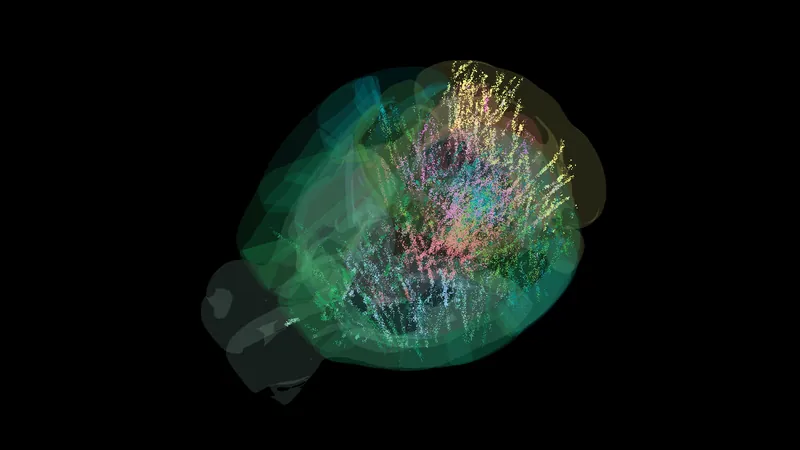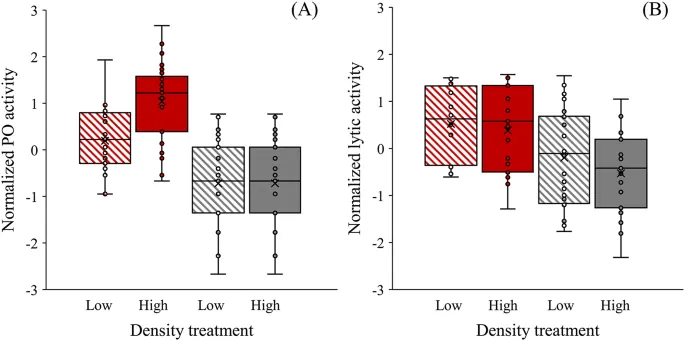
Revolutionary Brain Map Uncovers Secrets of Decision-Making!
2025-09-04
Author: Amelia
In a groundbreaking achievement, researchers have crafted the world's first comprehensive activity map of a mammalian brain, fundamentally changing our understanding of how decisions are made.
Mapping the Mind of a Mouse: A 600,000 Cell Extravaganza
This ambitious initiative, involving over a dozen labs and data from more than 600,000 mouse brain cells, examined almost the entire mouse brain. Findings published in the journal Nature indicate that decision-making engages far more areas of the brain than previously believed.
Uniting Scientists for a Common Goal
The project, spearheaded by the International Brain Laboratory (IBL), brought together experts from Europe and the U.S. who were frustrated by the disjointed nature of existing brain research.
Neuroscientist Matteo Carandini from University College London explained the dilemma many labs faced: they were tackling similar questions but using different methodologies. This inconsistency made it difficult to reach concrete conclusions.
A Standardized Approach to Brain Research
Determined to change the landscape of neuroscience, the IBL designed a massive, standardized experiment that no single lab could undertake alone. They utilized cutting-edge brain measurement tools and uniform analytical methods to ensure reproducibility of results.
139 Mice, 12 Labs, One Common Task
In this monumental endeavor, 139 mice across 12 global labs were equipped with Neuropixels probes, allowing simultaneous recording of up to 1,000 neurons. The mice engaged in a simple yet consistent task: they were shown a black-and-white striped marker on a screen and received rewards based on their responses.
The Surprising Complexity of Decision Signals
Initially, neuroscience textbooks suggested a straightforward progression of brain activity: visual areas activation would lead to decision-making regions firing before muscle movement responses. While some expected patterns were confirmed, the researchers discovered decision-related signals spread across much more of the brain than anticipated.
Prior Knowledge Shapes Decisions
In trials where the on-screen marker was barely visible, the mice had to use their prior experiences to make educated guesses. Data showed that brain activity during these guesses was also broadly distributed, contradicting previous assumptions.
A Telescope for the Brain
Carandini likened the project’s impact to the advent of the telescope in astronomy. Previous research had focused on isolated regions of the brain, but this initiative opened up a holistic view, akin to observing the entire night sky in detail.
The Next Frontier: Causation in Neuroscience
With novel technologies and collaborative efforts paving the way for these findings, the researchers are excited about the future. While current results show correlation, establishing direct causation in decision-making remains the next challenge for neuroscience.
"That’s the next frontier," Carandini stated, signaling a bright future for understanding the intricacies of the brain.









 Brasil (PT)
Brasil (PT)
 Canada (EN)
Canada (EN)
 Chile (ES)
Chile (ES)
 Česko (CS)
Česko (CS)
 대한민국 (KO)
대한민국 (KO)
 España (ES)
España (ES)
 France (FR)
France (FR)
 Hong Kong (EN)
Hong Kong (EN)
 Italia (IT)
Italia (IT)
 日本 (JA)
日本 (JA)
 Magyarország (HU)
Magyarország (HU)
 Norge (NO)
Norge (NO)
 Polska (PL)
Polska (PL)
 Schweiz (DE)
Schweiz (DE)
 Singapore (EN)
Singapore (EN)
 Sverige (SV)
Sverige (SV)
 Suomi (FI)
Suomi (FI)
 Türkiye (TR)
Türkiye (TR)
 الإمارات العربية المتحدة (AR)
الإمارات العربية المتحدة (AR)